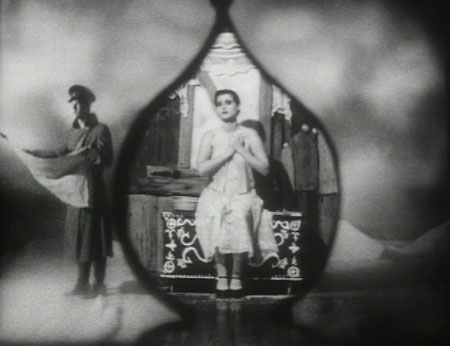“Something weird is going on here. What is it about us? Even in ‘Nam it was always weird. Are we all crazy or something?” –line in original screenplay to Jacob’s Ladder

DIRECTED BY: Adrian Lyne
FEATURING: Tim Robbins, Elizabeth Peña, Danny Aiello
PLOT: Jacob Singer (nicknamed “Professor” by his army buddies due to his glasses and Ph.D.) is wounded in Vietnam after a harrowing, disorienting battle. While he is on duty in Vietnam, his young son dies; years later, he works in New York City as a postman and has a sexy new girlfriend, Jezzie. Jacob begins suffering flashbacks of the day he was wounded, along with hallucinations in which everyday people take on demonic forms—catching brief glimpses of tails, horns, and howling faces with blank features—and eventually discovers that the other members of his unit are experiencing similar symptoms.

BACKGROUND:
- The script for Jacob’s Ladder shuffled between Hollywood desks for years, impressing executives but not being viewed as a marketable project. The script was cited by American Film Magazine as one of the best unproduced screenplays.
- Before he asked to direct Jacob’s Ladder, British director Adrian Lyne was best known for sexy, edgy, and profitable projects such as Flashdance (1983), 9 1/2 Weeks (1986) and Fatal Attraction (1987).
- Screenwriter Bruce Joel Rubin (who later wrote Ghost [1990] and other commercial properties) says that his script was partly influenced by The Tibetan Book of the Dead.
- Adrian Lyne states that some of the hellish visual cues in the film, including the whirring and vibrating head effect, were inspired by the woks of grotesque painter Francis Bacon.
- Lyne deleted scenes and changed the ending after test audiences found the film to be too intense.
INDELIBLE IMAGE: A blurred, whirring human head which shakes uncontrollably from side to side at tremendous speed, seen several times throughout the film. The effect looks mechanical, as if the head were an unbalanced ball attached to an out-of-control hydraulic neck. It was achieved by filming an actor casually shaking his head from side to side at four frames per second, which produced a terrifying effect when played back at the standard twenty-four frames per second. The technique has been imitated in movies, video games, music videos, and even a porno flick since, but has never since been used to such fearsome effect.
WHAT MAKES IT WEIRD: Like many psychological thrillers, Jacob’s Ladder strives to keep the audience disoriented and off-balance, wondering what is real and what is false. The movie achieves this effect wonderfully, but what gives it it’s cachet as a weird movie are two intense hallucination sequences: one at an horrifically orgiastic party intermittently lit by a strobe light, and one where the protagonist lies helpless on a hospital gurney as he’s wheeled down an increasingly bizarre and alarming hospital corridor. Both scenes are difficult to forget, equal parts creepy surrealism and visceral body-horror.
Original Trailer for Jacob’s Ladder
COMMENTS: I can’t watch Jacob’s Ladder without comparing it to Alan Parker’s Angel Heart. The similarities are obvious: both were psychological thrillers with supernatural Continue reading 11. JACOB’S LADDER (1990)




